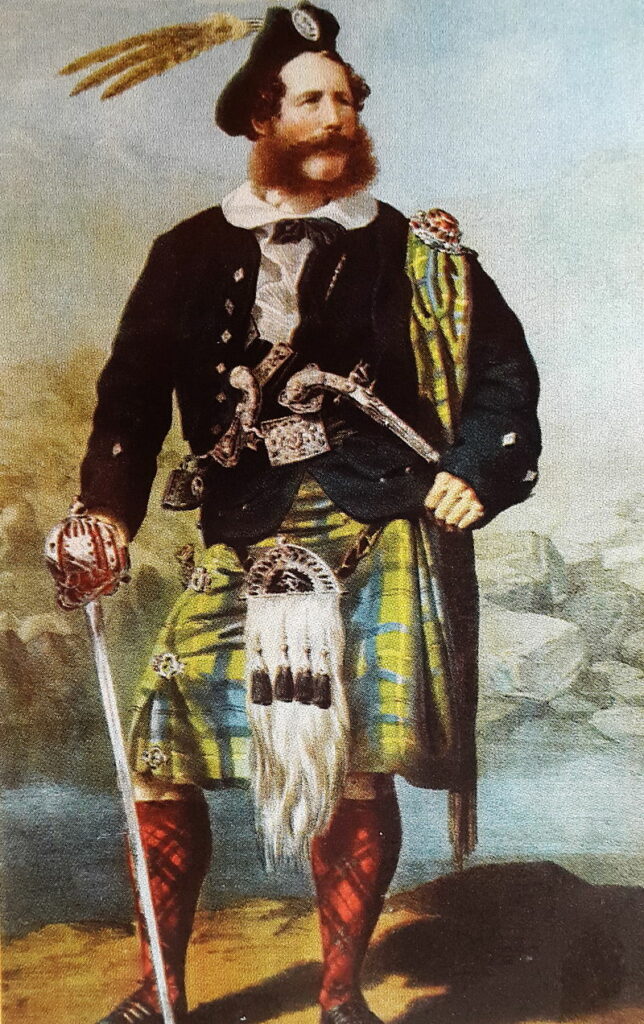A tropical palm-leaf hat with a wide brim and shallow crown is displayed discreetly on a wall in the museum’s Victorian gallery. The hat once belonged to the infamous big game hunter Roualeyn George Gordon-Cumming (1820-1866). The museum once also had his walking stick, which was iron shod with a plaster head of lion separately fixed to it with peg. Sadly, the walking stick was disposed of in 1966 because it was riddled with wood worm.
Cumming was an interesting character, who was celebrated in his day for his hunting adventures in South Africa, but by today’s standards his exploits for indiscriminately hunting now endangered African wildlife may appear distasteful to many. Even in his own time he was a controversial figure; the explorer David Livingstone once rescued him and described him as “a mad sort of Scotchman”.
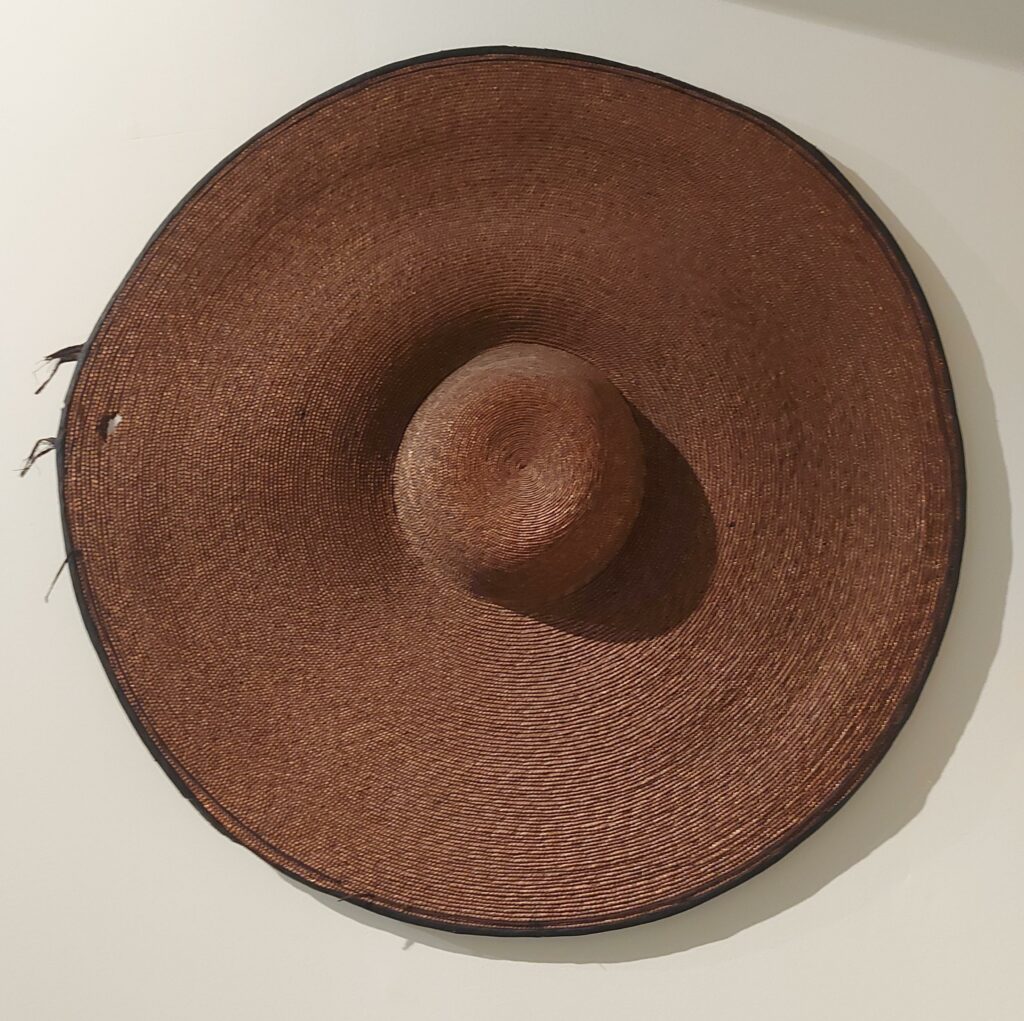
Gordon-Cumming was born into the Scottish aristocracy and educated at Eton. As a young man he joined the East India Company, stopping in Africa on his way to India, he had his first experience of hunting in South Africa. In 1840 he resigned his position because the Indian climate did not agree with him and returned to Scotland to pursue his hunting interests. He had loved to hunt in Scotland from an early age, but did not find Scottish hunting challenging enough, so he travelled to Africa and made five trips into interior of South Africa hunting between 1844-9. There he met David Livingstone, who had to come to his rescue when his oxen died and Livingstone had to send all his own oxen to help the hunter and his entourage. Later, Gordon-Cumming supplied the ruler of the Kwêna people of Botswana, with guns in exchange for ivory, and it was Livingstone who was erroneously blamed for arming the Africans.
On his return to Britain, he published Five Years of a Hunter’s Life in the Far Interior of South Africa, a book illustrating his African adventures which had immense success and was published in many editions from 1850. Gordon-Cumming’s collection of hunting trophies was exhibited at the Great Exhibition at Crystal Palace in 1851 and afterwards his collection, known as The South Africa Museum, was exhibited in various parts of the United Kingdom.
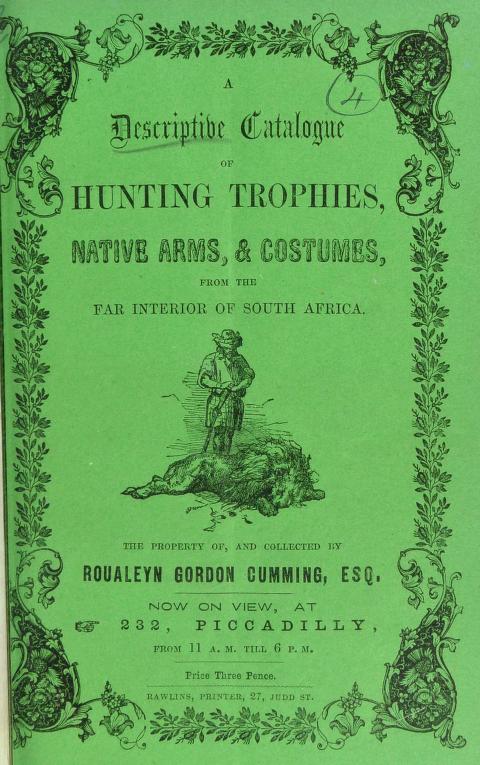
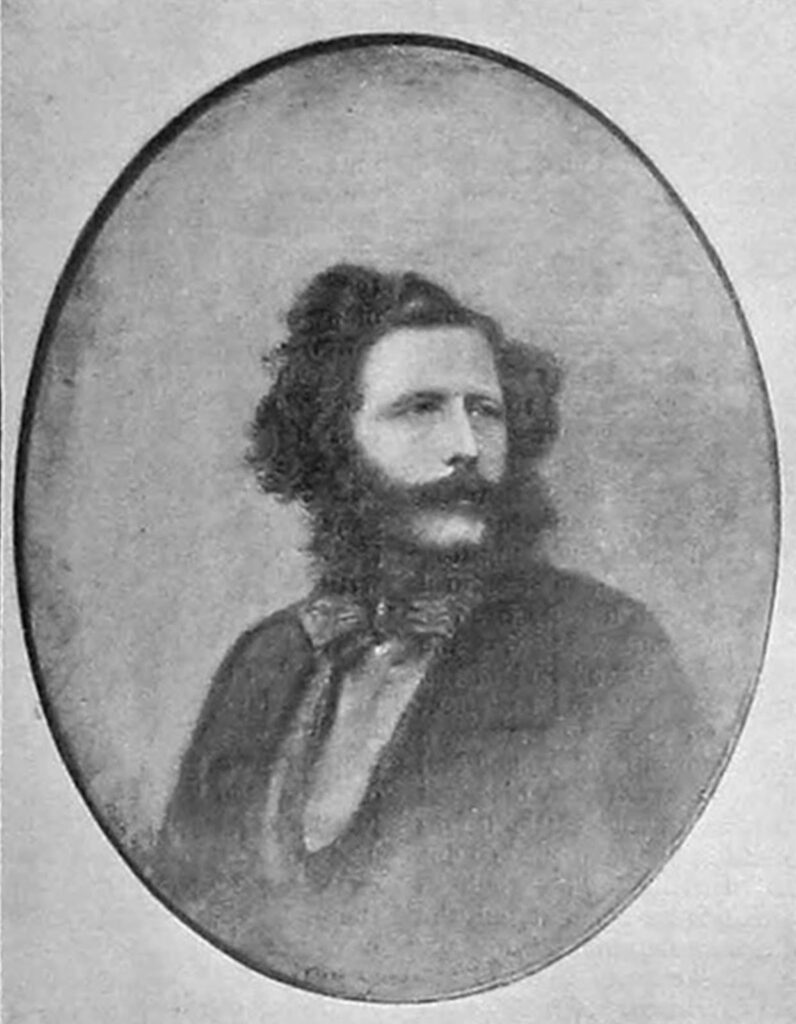
In 1858 Gordon Cumming went to live at Fort Augustus within the former soldier’s barracks. He set up his museum beside the canal locks on the Caledonian Canal, where the exhibition of his trophies attracted many visitors, who stopped for a break on their journey along the Caledonian Canal between Inverness and Fort William. He charged one shilling entry to the exhibition and reportedly used to “meet the tourist steamers with a number of retainers similarly attired in grotesque costume, and preceded by a magnificent goat, would lead the way to his museum. In warm weather he discarded this gorgeous raiment and went about clad only in a shirt and stockings.”
He died at Fort Augustus in 1866. According to his obituary “In person the deceased was remarkable for his great height and massive symmetry of build … he was physically a king of men.” His collection was sold after his death, apparently not at auction but privately. Much is said to have been bought by Barnum and destroyed in a fire; some pieces reached the British Museum via the dealer William Wareham and other collectors.
Vanessa Martin
Curator Manager
West Highland Museum
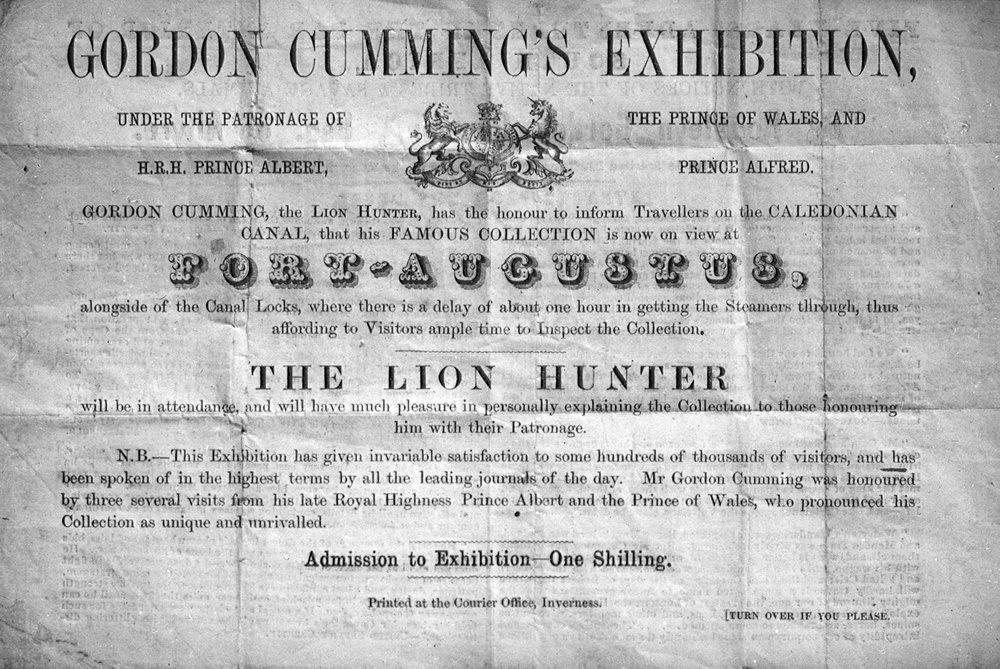
Sources / Further Reading:
British Museum website. “Roualeyn Gordon Cumming” https://www.britishmuseum.org/collection/term/BIOG24176
Gordon-Cumming, Roualeyn. “Five Years of a Hunter’s Life in the far interior of South Africa”, 1850. https://archive.org/details/fiveyearsahunte01cummgoog
Oxford Dictionary of National Biography. “Cumming, Roualeyn George Gordon” https://www.oxforddnb.com/display/10.1093/ref:odnb/9780198614128.001.0001/odnb-9780198614128-e-6899?rskey=gOiKAO&result=3b
University of Edinburgh. “Lion Hunter: Roualeyn George Gordon-Cumming.” The Calum Maclean Project https://calumimaclean.blogspot.com/2017/02/lion-hunter-roualeyn-george-gordon.html
West Highland Museum’s collections information
Wikipedia. “Roualeyn George Gordon Cumming” https://en.wikipedia.org/wiki/Roualeyn_George_Gordon-Cumming

